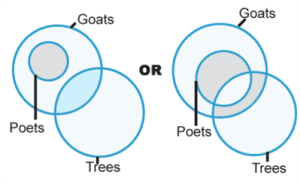Percentages for CAT is one of the most recurring topics in the Quantitative Aptitude Section. Additionally, questions belonging to this topic comes in many forms in the DILR (Data Interpretation and Logical Reasoning) Section. Percentages as a concept holds its arithmetic importance in many topics like Profit and Loss, Ratio and Proportion, Time, Speed, and Distance.
Students often overlook percentages in their preparation plan when they’re short on time. Our CAT coaching kolkata advises you to not make the same mistakes as others do in their preparation strategy.
Basic Concepts
Percentage or Percent in its literal sense means “for every 100”. It is derived from the French word ‘cent’, which is French for 100. You might have first encountered Percentages on your School’s report card. It is often denoted by a percent sign at the end, %. When we say someone scored 95% in the Final assessment, it means that they scored 95% of the total maximum marks. No matter the subject we are addressing, we use percentages to refer any quantity to a default 100.
Example
If in a classroom of 300 students, only 150 students attended the lecture on pre-historic era on Saturday, then the percentage of students who attended that lecture is 50%. For instance, If the total number of students had been 200, and the students who attended had been 150, then the percentage of students who attended would have been 75%. The students who had not attended in the latter scenario would have been 25% then.
Mathematically,
1st Case:
Total Number of Students = 300
Number of Students who attended the lecture = 150
Then,
Percentage of students who attended = (150/300) × 100 = 50%
2nd Case:
Total Number of Students = 200
Number of Students who attended the lecture = 150
Then,
Percentage of students who attended = (150/200) × 100 = 75%
In both the cases, we are multiplying the fractions obtained to calculate the percentage, that is, per 100.
Concept of Percentage Change
Whenever the value of a measured quantity changes, the change can be calculated through the following :
a) Absolute Value Change
b) Percentage Change
Either of the concepts can be applied to solve suitable questions. Both of these methods have their own pros and cons.
Absolute Value Change
It is the literal change in the measured quantity, that is, the measurement by which a quantity has increased or decreased.
For example, a shopkeeper made a sum of Rs. 5000 on the Monday. Then, he made Rs. 7000 on the following day. As a result, the absolute value change of the sales he made on Tuesday compared to Monday is Rs. 2000.
Percentage Change
It is the percentage of the Absolute Value Change with respect to the original values.
Percentage Change = [(Absolute Value Change)/(Original Value)] × 100
Example
The population of a city grew from 20 lakh residents to 24 lakh residents. Then, find the percentage change and the percentage on the final value of the population.
Solution:
a) Percentage Change = (4/20) × 100 = 20%
b) Percentage Change on the final value = (4/24) × 100 = 16.67%
Example Questions
1. if 25% of x =30% of y, then find the value of x if y = 5000.
Options:
(a) 2000
(b) 3000
(c) 4000
(d) 6000
Solution:
We know that,
y = 5000
(25/100) × x = (30/100) × y
(25/100) × x = (30/100) × 5000
x = 6000
Therefore, the correct option is (d).
2. Which of the following is the largest number?
Options:
(a) 40% of 100
(b) 5% of 800
(c) 1000% of 4
(d) 200% of 9
Solution:
We know that,
40% of 400 = (40/100) × 400 = 160
5% of 800 = (5/100) × 800 = 40
1000% of 4 = (1000/100) × 4 = 40
200% of 9 = (200/100) × 9 = 18
Evidently, the correct option is (a)
3. In a mixture of 100 litres of milk and water, 25% of the mixture is milk. How much water should be added to the mixture so that milk becomes 20% of the mixture?
Options:
(a) 25 litres
(b) 15 litres
(c) 20 litres
(d) 24 litres
Solution:
We know that,
Mixture of Milk and Water = 100 litres
25% of the mixture is milk = 25 litres
Mathematically,
(25/100) × 100 = 25%
The water to be added to this 100 litres of milk and water is 25 litres for the milk in the mixture to become 20%.
After addition of Water,
Total mixture of Water and Milk = 125 litres
Milk in the mixture = 25 litres
Mathematically,
[(Milk in the mixture)/(Total quantity of the mixture after addition of Water)] × 100
⇒ (25/125)×100
= 20%
In conclusion, Option (a) is the correct option.
4. The minimum quantity of Kerosene in litres (in whole number) that should be mixed in a mixture of 60 litres in which the initial ratio of Kerosene to water is 1:4, so that the resulting mixture has 15% Kerosene is
Options:
(a) 3
(b) 4
(c) 5
(d) This is not possible
Solution:
We know that,
The total quantity of the mixture of Kerosene and Water = 60 litres
Ratio of Kerosene to Water in the mixture = 1:4
Let’s assume the parts of Kerosene and Water is 1k and 4k respectively
Then,
1k + 4k = 60
5k = 60
⇒ k = 60/5 = 12
As a result, Kerosene in the mixture of 60 litres is 12 litres
Initial Percentage of Kerosene = (12/60) ×100 = 20%
As the initial Percentage of Kerosene is 20% and on addition of more Kerosene to the mixture, the percentage will only increase.
So, the correct option is (d)






